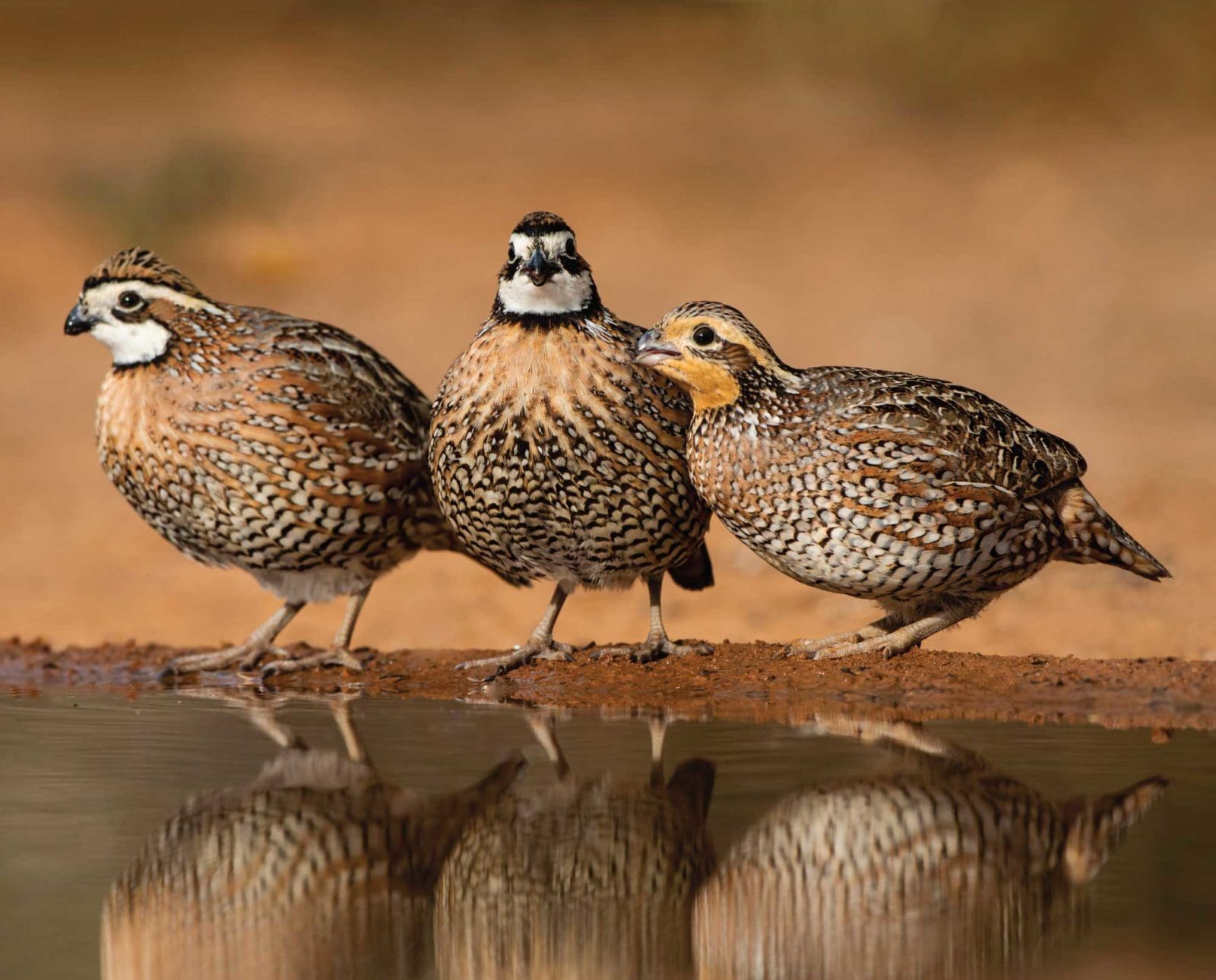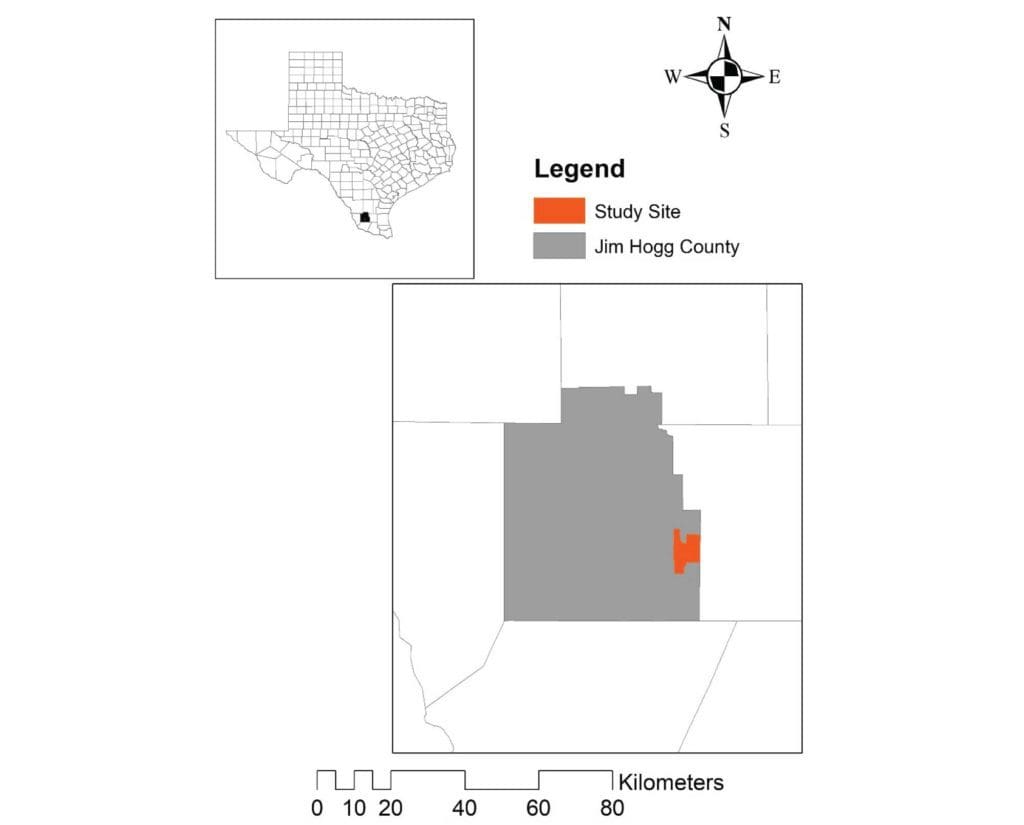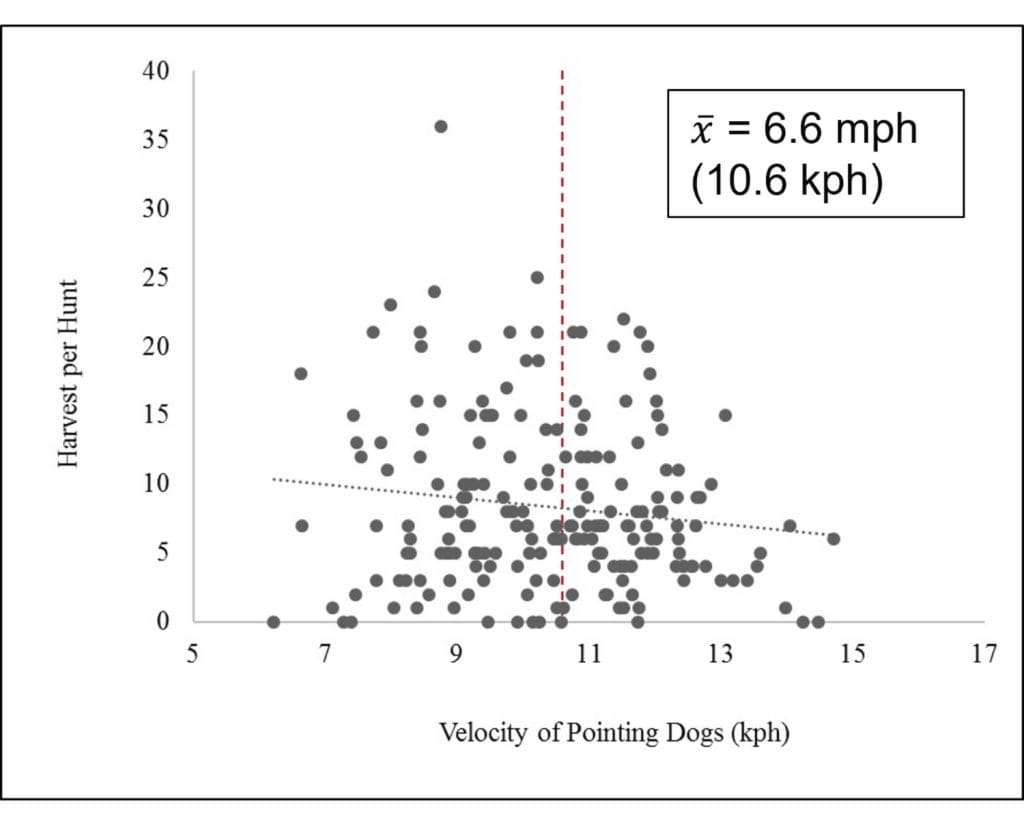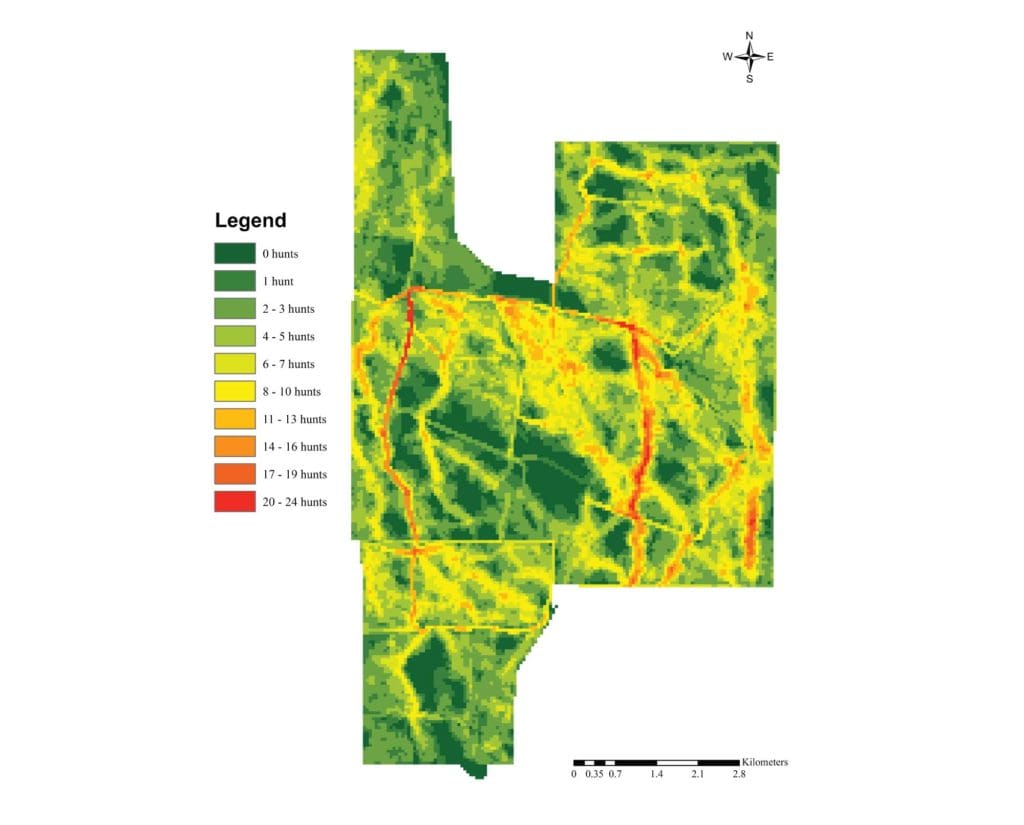Home » Quail Species » Bobwhite Quail Hunting » How Research Informs Bobwhite Management and Hunting Recommendations
How Research Informs Bobwhite Management and Hunting Recommendations

Dr. Abe Woodard is a Range and Wildlife Scientist at…
Reviewing northern bobwhite hunting dynamics with scientific research
Similar to many upland game species, the northern bobwhite has experienced range-wide declines over the last century. These declines are primarily attributed to changes in land use and habitat loss. However, many unanswered questions remain regarding the sustainability of populations exposed to an annual harvest and associated hunting pressure.
Listen to more articles on Apple | Google | Spotify | Audible
Currently, harvest rates are managed through state-level bag limits and season lengths. However, scientists recommend managing harvest at the property or pasture scale using a sustained yield harvest. Sustained yield is the amount of a resource that can be utilized without causing depletion; in this case, we’re talking about bobwhites.
The first component of using a sustained-yield approach is that managers limit the proportion of the population harvested annually, or the harvest rate of quail. The harvest rate varies based on location and annual population size. This leaves a desired number of bobwhites for reproduction through the spring and summer months on a local level.
The second component of sustained yield harvest is managing hunting pressure across space and time. Like harvest rate, the spatial and temporal distribution of hunting pressure can impact the persistence of a population of quail, their feeding patterns, and their avoidance behaviors. It also affects the overall success of hunting parties.
In 2018, the Caesar Kleberg Research Institute and the East Foundation began investigating the sustainable harvest of northern bobwhites in South Texas. The research project took place on a private, 15,000-acre property owned by the East Foundation in Jim Hogg County, Texas. The project evaluated the 20 percent harvest rate recommended for South Texas by the Caesar Kleberg Wildlife Research Institute, analyzed the spatial and temporal aspects of hunting pressure, and provided management guidance for landowners and managers.

A Rundown of the Harvest Study
A total annual harvest quota was prescribed based on aerial surveys conducted from a helicopter each November before hunting season began. The quota assumed that 16 percent of birds are bagged and four percent are crippled, or shot and not recovered. The study designated three distinct hunting sections during the statewide November-February season:
- Early (November–mid-December)
- Middle (mid-December–late January)
- Late (late January–late February)
Hunters used the standard hunting method for South Texas; following pointing dogs on modified trucks until a covey was located, then approaching by foot. Baiting quail was prohibited, but hunters were unrestricted by the number of quail harvested per covey or the number of pursuits per covey.
A trained researcher accompanied each hunt and collected spatial hunting distribution data using GPS units on trucks and hunting dogs. They also recorded detailed hunting logs from each hunt, documenting the start and end time for each hunt, brace (i.e., one dog or two dogs hunting simultaneously), if a covey was found, and non-hunting activities like snack breaks or traveling. During each covey interaction, researchers estimated covey size, pursuits, shots fired, bobwhites retrieved, and bobwhites crippled.
In total, researchers documented 211 quail hunts occurring during the 2018–2019, 2019–2020, and 2020–2021 hunting seasons. The following is a summary of some key findings intended to help with the strategic planning of quail hunts across properties and hunting seasons.

When Exactly Bobwhite Hunters Went Hunting
In total, we recorded 668 hours of bobwhite quail hunting activity. Eighty-nine percent occurred between 7:00 am and 2:00 pm, and the remaining 11 percent occurred between 2:00 pm and 7:00 pm. On average, morning hunts lasted 3.5 hours and evening hunts lasted 1.7 hours.
Unlike quail hunters in other studies, the hunters in this study consistently started hunts during morning hours at legal shooting light. We contribute to this to the advantage of morning scenting conditions in South Texas and their desire to maximize the time spent in the field.
Hunters spent 50 percent of their time in the field from mid-December to late January. This period of time accounted for 53 percent of covey encounters and 55 percent of the total harvest. Hunters were least efficient from November through mid-December. During this time, they found 13 percent fewer coveys and harvested 30 percent fewer birds per covey encounter.
The reduction in overall hunting success during the early parts of the hunting season is likely why hunting in South Texas is geared toward the latter portion of the hunting season. Weather patterns during the early season are typically unfavorable for quail hunting, with cooler weather and moisture more common throughout January and February.
READ: Environmental Factors that Drive Bobwhite Quail Chick Survival
Bobwhite Hunter Harvest and Covey Encounter Rates
Hunters experienced 1,805 encounters with bobwhite coveys, with an average coveys size of 9.3 bobwhites. Hunters found 2.8 coveys per hour during morning hunts and 2.4 coveys per hour in the afternoon. On average, hunters retrieved one quail and crippled 0.3 per covey encounter. The average number of gunshots per quail retrieved was 5.1, and hunters crippled one quail for every 15.3 shots.
The harvest rate and shooting efficiency are significantly lower than previous researchers have reported. However, this may be an honest representation of bobwhite hunters in South Texas. Hunting parties are often very diverse, with some composed of seasoned veterans, while others focus on the entertainment of families and corporate customers, ranging from novice to expert. Therefore, the experience and ability of hunters should be considered when planning the number of hunts scheduled across a hunting season.
Hunting Dog and Brace Measurements
During 836 braces, researchers recorded 153 individual dogs. Sixty-seven were female and 86 dogs were male. One hundred and forty-three of them were Pointers and 10 were English Setters. On average, each dog was 4.6 years old.
Morning braces lasted approximately 42.9 minutes and covered 46.2 acres. Evening braces averaged 28.8 minutes, covering 30.6 acres. The research found that dogs would double back and cover areas that had been already hunted 32.8 percent of the time, and when two dogs were used, their redundancy rate was 39.5 percent.
It has been previously assumed that managing the speed of a hunt would influence the number of quail harvested per day. Therefore, we expected to see a relationship between daily harvest and hunting velocity. The average dog velocity was 6.6 miles per hour, but velocity had no relationship with the daily harvest. However, when considering velocity is 0 mph when dogs are pointing, logically, having more pointing activity will decrease average velocity. Accordingly, the management of hunt velocity is better served as a measure of dog ability and performance, rather than manipulating daily harvest rates in South Texas.

Acreage Each Hunting Party Covered
On average, hunting parties hunted 58.8 acres per hour across three hunting seasons. Morning hunts covered 59.3 acres per hour and evening hunts covered 56.6 acres per hour. To analyze hunting pressure, the entire study area was divided into ⅝-acre plots, representing the scale at which bobwhite hunters look for coveys and the maximum range of firearms used during quail hunts. After 211 hunts, 90 percent of the study area was hunted at least once time, 80 percent of the area was hunted at least twice, and nine percent was hunted more than 10 times.
Hunted areas had an average brush density of 22 percent. Non-hunted areas had an average brush density of 45 percent. Additionally, hunted areas generally occurred 92 yards from access roads. Non-hunted areas were about 180 yards from roads. According to our model, total hunting pressure decreased by 12 percent for every 5 percent increase in brush and 11-yard increase in the distance from access roads.
Generally, hunters focus on areas where they find the most coveys and get open shots at coveys found. This is heavily influenced by brush configurations and access roads throughout pastures in South Texas. Therefore, managers should focus on the strategic placement of road systems and brush management to optimize the huntable area available, which in turn will help distribute hunting pressure spatially.
Studying Upland Hunting Dynamics Informs Wildlife Managers
As managers, hunters, and land stewards, we are responsible for ensuring the continued existence of the upland game birds we pursue. This responsibility includes the sustainability of our harvest practices. Quantifying upland hunting dynamics provides management tools for distributing harvest pressure across time and space. This allows managers to increase or decrease total harvest based on their management objectives.
Modern upland hunters have many tools at their disposal for recording and managing hunting pressure such as Garmin Tracking Systems, onXMaps, CoveyIQ, and more. Let us hope we can do our part to conserve these species and continue the legacy of upland hunting far into the future.
The author would like to thank the East Foundation for access and generous funding, as well as the coauthors on the study and original manuscript: Dr. Leonard Brennan, Dr. Fidel Hernández, Dr. Humberto Perotto-Baldivieso, and Dr. Neal Wilkins. The information from this article was published in the Proceedings of the 9th National Quail Symposium and can be viewed at www.quailcount.org under Woodard et al. 2022.
Dr. Abe Woodard is a Range and Wildlife Scientist at the East Foundation in Hebbronville, Texas. His research focuses on population ecology and sustainable management of upland game birds. Abe earned his Ph.D. at Texas A&M -Kingsville where he investigated the affects of harvest on bobwhite populations. Prior to returning to grad school he spent 6 years on King Ranch as a wildlife biologist for Halliburton, and 3 years working for Deseret Ranches as a Natural Resource Manager/Wildlife Biologist over their central region, spanning from Nebraska to Texas.




